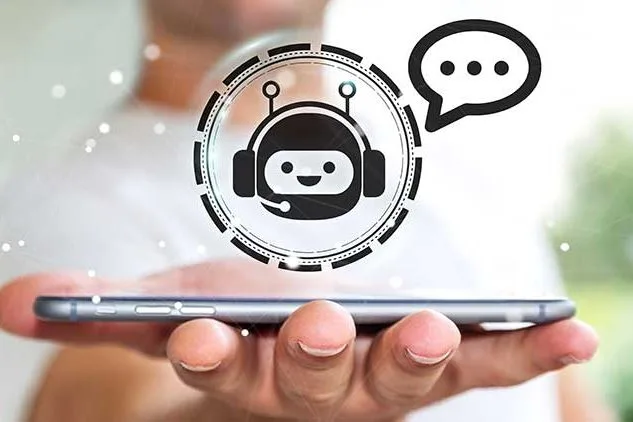Customer “Self-Service” Options: Why They’re Great to Offer
We’ll share our master list of self-service options that you can integrate into your strategy and discuss the benefits of customer self-service channels.
According to Zendesk’s 2020 Customer Experience Survey: more than 20% of customers believe self-service is a critical part of a good customer experience.
But selecting the right mix of self-service tools can be a challenge for most retail and eCommerce businesses. In this post, we’ll share our master list of self-service options that you can integrate into your strategy and discuss the benefits of customer self-service channels.
Let’s dive in.
FAQ Pages
Retailers and eCommerce brands often treat content (like FAQ sections, blog posts, and how-to videos) as resources for leads. It populates SERPs and pops up in social media feeds to answer questions proactively. And leads can seek it out on your website to resolve any issues they might have prior to making a purchase.
For instance, a lead might need to know what your average delivery time is or want some suggestions for products in a particular category.
However, knowledge base content can also be a valuable asset for customer support inquiries as well. With it, retail businesses can answer important FAQs like:
- How to track an order
- How or cancel or return an order
- How to change their account password
- Where to print off return shipping labels
Since knowledge center content can be accessed on demand by your customers, they can find answers to questions and resolve issues without having to wait in a queue to talk to your support agents. And that means higher levels of customer satisfaction for your brand.
Visual IVR
When customers call your contact center, they’re often met with a series of menus designed to route their call to the support agent that can resolve their issue the fastest. But there are several problems with standard IVR solutions. One, everything is auditory – which means customers have to be able to listen carefully to find the right menu options. And two, there’s no way to easily backtrack if you make a mistake. You either have to hang up and start over, or you have to go back one menu at a time and listen to each message all over again until you find the junction where you went wrong.
Visual IVR solutions optimize this process by pairing the functionality of a visual interface with the standard IVR menu guidance. This enhanced service experience makes it easier for customers to navigate around your menu and self-serve their own solutions because they can see what they need to do.
It also enables a greater level of customer engagement, because shoppers have the flexibility to log into their accounts or track packages directly from the interface. And once they’ve found the answer they were looking for, they can simply hang up to end their online session.
Chatbots
Sometimes your customers need a little more hands-on support to solve a frequently asked question. But often, it isn’t worth their time to connect them with a human agent in your contact center.
In these cases, chatbots offer a lot of value. They can respond in real-time to answer questions and provide resources from your knowledge center. Shoppers can use them to find and navigate support portals. Chatbots can even route customer inquires to live support agents if it becomes clear that the question is too complex for the algorithm to handle.
Best of all, chatbots don’t have to feel impersonal or robotic. They can be programmed to read and respond in natural language and mimic your brand voice.
As a result, they not only elevate the user experience on your website but also enhance the customer experience by providing one-on-one support when your agents are unable to do so.
Customer Self-Service Portal
In order for knowledge centers and other types of self-service tools to be useful, your customers need a way to resolve issues on their own. Otherwise, they’ll get stuck with knowledge they can’t use.
Using customer self-service portals, your shoppers have all the tools they need to resolve simple problems themselves (like order tracking and address updates). These self-service portals are also protected by customer passwords, which means customers are still protected from identity theft and account takeover fraud. Here are a few tools you might see in a customer portal:
- Account management capabilities (password resetting, address and credit card updates, etc.)
- FAQs and step-by-step tutorials for solving problems
- Order tracking features
- Helpdesk features (where customers can send in tickets and track their resolution)
Help Desk
When customers run into problems they can’t resolve – like getting locked out of their account – they don’t want to sit on hold for 15 minutes and spend another 10 explaining the problem to your support agents only to be told that you need to create a support ticket for the IT team.
Helpdesk features allow you to cut the middle man out of the process, by giving shoppers the freedom to create support tickets on their own. If integrated with your customer self-service portal, your customers can also keep up with the status of their support ticket – eliminating the need to contact your human agents for updates on ticket resolution.
While implementing self-service solutions is critical to a strong customer experience, knowing which tools to add to your self-service strategy is difficult. But as with every customer-facing activity, the trick is to know your shoppers and what their customer support habits are. Once you have a good idea of these two things, you’ll be able to select the right support channels (whether Visual IVR, chatbots, self-help portals or a combination of several) that boost customer satisfaction and increase customer engagement.
